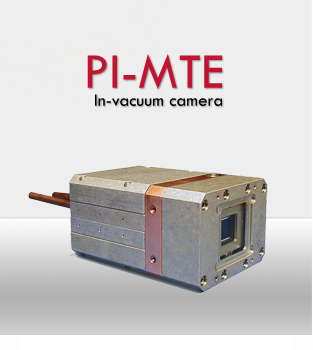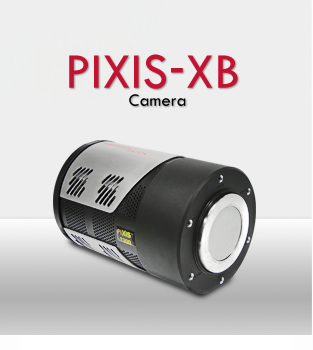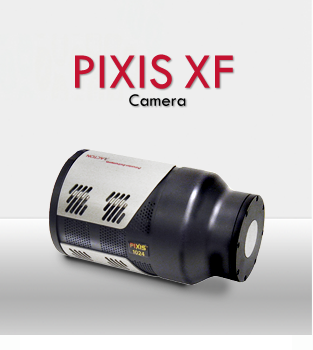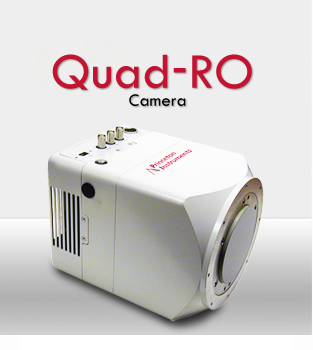X-RAY CCD 探測器
作者: Kevin Peng 發(fā)布于: 2017-04-24 18:53 點(diǎn)擊:次
SOPHIA-XO Soft X-Ray Cameras

The high-sensitivity, high-speed, thermoelectrically-cooled SOPHIA-XO camera utilizes a back-illuminated CCD without antireflective coating for direct detection of the widest range of x-rays - between ~10 eV and 30 KeV. A rotatable ConFlat® flange with a high-vacuum seal design, as well as software-selectable gains and readout speeds, makes this camera well suited for UHV applications.
Key features of SOPHIA-XO cameras include the following:
-
2048 x 2048, 15 µm pixel, back-illuminated, no AR sensor
-
Permanent vacuum guarantee
-
3.2 fps at full resolution with 16 MHz readout speed
-
Excellent sensitivity in the ~10 eV to 30 KeV range
-
Most advanced thermoelectric cooling design- ArcTecTM
-
Flexible, multi-port readout design
-
Compatible with EPICS control software
-
Fully supported by 64-bit LightField software
X-Ray Cameras for VUV and EUV Applications
High-sensitivity, thermoelectrically cooled PIXIS-XO cameras utilize various back-illuminated and back-illuminated, deep-depletion, CCDs without antireflective coating for direct detection of the widest range of x-rays — between ~30 eV and ~20 KeV. A rotatable ConFlat flange with a high-vacuum-seal design, as well as software-selectable gains and readout speeds, make these cameras well suited for UHV applications.
The PIXIS-XO series offers the following features:
-
Broad selection of CCDs without antireflective coating (1340 x 100 to 2048 x 2048 pixel arrays; 13 x 13 µm to 20 x 20 µm pixel sizes)
-
Sensitivity in the X-ray energy range from ~30 eV to
~ 20 KeV
-
Rotatable ConFlat flange design
-
Flexible dual-amplifier readout design
-
High Speed USB 2.0 interface
-
Full experiment control via 64-bit LightField software (optional)
See soft x-rays and more.
Princeton Instruments PIXIS-XO systems are engineered to deliver the highest direct-detection performance for applications that involve x-ray spectroscopy, x-ray imaging, x-ray microscopy, x-ray plasma diagnostics, and EUV lithography.
With an extensive variety of CCD formats, 100% fill factor, low-noise electronics, and -70°C to -90°C thermoelectric cooling, PIXIS-XO cameras provide hassle-free operation in research and OEM environments.

PIXIS-XO Direct Detection X-Ray Camera model comparison and datasheets
|
Model |
Imaging Array |
Pixel Size |
Sensor Type |
100B  |
1340 x 100 |
20 x 20 µm |
back-illuminated |
100BR  |
1340 x 100 |
20 x 20 µm |
back-illuminated, deep-depletion |
400B  |
1340 x 400 |
20 x 20 µm |
back-illuminated |
400BR  |
1340 x 400 |
20 x 20 µm |
back-illuminated, deep-depletion |
1024B  |
1024 x 1024 |
13 x 13 µm |
back-illuminated |
1024BR  |
1024 x 1024 |
13 x 13 µm |
back-illuminated, deep-depletion |
1300B  |
1340 x 1300 |
20 x 20 µm |
back-illuminated |
2KB  |
2048 x 512 |
13.5 x 13.5 µm |
back-illuminated |
2048B  |
2048 x 2048 |
13.5 x 13.5 µm |
back-illuminated
|
PI-MTE In-Vacuum Cameras

Smallest X-Ray Cameras for In-Vacuum Applications
Princeton Instruments, the world’s leading developer and supplier of ultra-low-noise, deep-cooled scientific CCD cameras, is proud to offer our popular PI-MTE series for in-vacuum x-ray imaging and spectroscopy applications. PI-MTE cameras are the smallest thermoelectrically cooled CCD cameras available for direct detection of soft x-rays in the energy range from <30 eV to ~20 keV and can operate, uninterrupted, for long periods of time inside a vacuum chamber.
The PI-MTE camera series provides the following key features:
-
Back-illuminated CCDs, with up to 2Kx2K resolution and without antireflective coating
-
Sensitivity in the x-ray energy range from <30 eV to ~20 KeV
-
Compact mechanical design, optimized for tight spaces inside vacuum chambers
-
High Speed USB 2.0 interface
-
Flexible readout speed from 50 KHz to 2 MHz
-
NEW Full experiment control via optional LightField software
PIXIS-XB Direct Detection

X-ray Cameras for Low-Flux Applications
PIXIS-XB thermoelectrically cooled, direct-detection cameras are ideal for low x-ray flux imaging and spectroscopy in the energy range from ~3 keV to ~20 keV. These cameras are available with back-illuminated, deep-depletion 1340x400 and 1024x1024 pixel arrays, as well as front- and back-illuminated, deep-depletion, 1340x1300 pixel arrays. A thin beryllium window in front vacuum-seals the unit for deep cooling, protects the CCD, and reduces background by filtering low-energy x-rays.
PIXIS-XB cameras offer the following salient features:
-
Sensitivity in the x-ray energy range from ~3 KeV to ~ 20 KeV
-
Vacuum chamber design with beryllium (Be) window
-
Flexible dual-amplifier readout design
-
High-speed USB 2.0 interface
-
Full experiment control via 64-bit LightField software (optional)
PIXIS-XF Indirect Detection

The PIXIS-XF series of low-noise cameras utilizes front- and back-illuminated CCDs for indirect imaging of x-rays via specially designed phosphor screens and other Lambertian sources. The unique mechanical design of the PIXIS-XF, whose fiberoptic faceplate extends outside the vacuum, offers outstanding flexibility for optimizing performance at a specific x-ray energy. Dual-speed operation at 100 kHz or 2 MHz enables these cameras to be used for steady-state as well as high-speed applications.
Notable features include:
-
Choice of front- or back-illuminated CCDs (1024 x 1024 or 2084 x 2084 pixel array; 13 x 13 µm or 13.5 x 13.5 µm pixel size)
-
Sensitivity in X-ray energy range from < 3KeV to >20KeV
-
High Speed USB 2.0 interface
-
Flexible dual-amplifier readout design
-
Unique mechanical design for easy phosphor replacement
-
Full experiment control via 64-bit LightField software (optional)
Quad-RO Indirect Detection

Large-Format CCD Cameras for X-Ray Diffraction Imaging
Princeton Instruments, the world’s leading developer and supplier of ultra-low-noise, deep-cooled scientific CCD cameras, is pleased to offer our popular Quad-RO series for indirect imaging of x-rays. Using a variety of phosphor screens, these thermoelectrically cooled, large-image-area, 4-readout-port cameras delivers optimized performance and impressive application flexibility in the x-ray energy range from ~3 KeV to >20 KeV.
-
Front-illuminated CCD with 2084 x 2084 pixel array and 24 x 24 µm pixels resolution with 24 x 24 µm pixel size (ITO technology)
-
Sensitivity in X-ray energy range from ~ 3 KeV to >
20 KeV
-
Industry-standard FireWire interface
-
Multiple-port readout for high frame rates
-
Unique mechanical design for easy phosphor replacement
-
Full experiment control via 64-bit LightField software (optional)
See the big picture (and all the little details) with our
Quad-RO system’s fiberoptically coupled 4-megapixel detector. The unique mechanical design of this single-head camera allows easy phosphor replacement in the field — GdOS:Tb phosphor screens optimized for 8, 12, and 17 keV x-ray energies are available. Applications include x-ray diffraction, x-ray crystallography, x-ray microtomography, x-ray phase contrast imaging, streak tube readout, and x-ray medical and industrial imaging.
 Simulated fluid streamlines through the pore space in a coral. Image courtesy of Dr. Tim Senden, ANU, Canberra, Australia.
Simulated fluid streamlines through the pore space in a coral. Image courtesy of Dr. Tim Senden, ANU, Canberra, Australia.
X-Ray Plasma Diagnostics
Hot and dense plasmas are of enormous interest in basic physics research because of the multitude of interesting phenomena that arise from them.
Soft X-Ray Microscopy
Soft X-ray Microscopy is used for imaging and researching the elemental composition and structure of biological samples and more.
EUV Lithography
EUV lithography is gaining popularity because it retains the look and feel of the traditional optical lithography process (i.e., utilizes the 13.5 nm wavelength) and uses the same basic design tools.
X-Ray Spectroscopy
X-ray absorption spectroscopy is an element-specific probe of the local structure of elements in a material.
|

